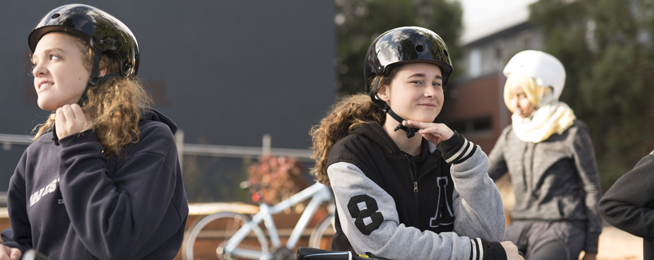“Protecting and investing in our ‘greatest untapped resource’* is one of our greatest public health challenges,” says the medical journal, The Lancet.
That resource is our adolescent population.
“With 1.8 billion adolescents aged 10–24 years in the world today, adolescent health has only recently been recognised as key to sustainable societies,” says the latest editorial of The Lancet Public Health.
Investment in the health and wellbeing of our adolescents delivers “a triple dividend” contends the renowned journal, “with potential benefits for the adolescent, their future adult life, and even future generations.”
Read more from The Lancet Public Health here.
With mental health a particular priority, the importance of good physical health was also identified as essential to the full flowering of the potential of our young people.
Both mental and physical health are a focus of Bicycle Network’s high school program, Mind.Body.Pedal.
The decline in physical activity, is starting earlier and is far more dramatic during secondary school, a time when patterns of activity in adulthood are established.
Research shows only one in ten adolescents are physically active, with teenage girls twice as inactive when compared to males in the same age bracket.
The Mind.Body.Pedal program encourages and supports teenage female secondary school students to live a healthy lifestyle and reinforce the benefits of active travel to and from school.
“This program has made me realise I can be active everyday by riding my bike to school and to not be afraid of what other people think”. Year 10, Hampton Park Secondary College.
Read more about the Mind.Body.Pedal program.
*A quote from former UN Secretary General Ban Ki-Moon in The Lancet about the potential of the adolescent human population.


